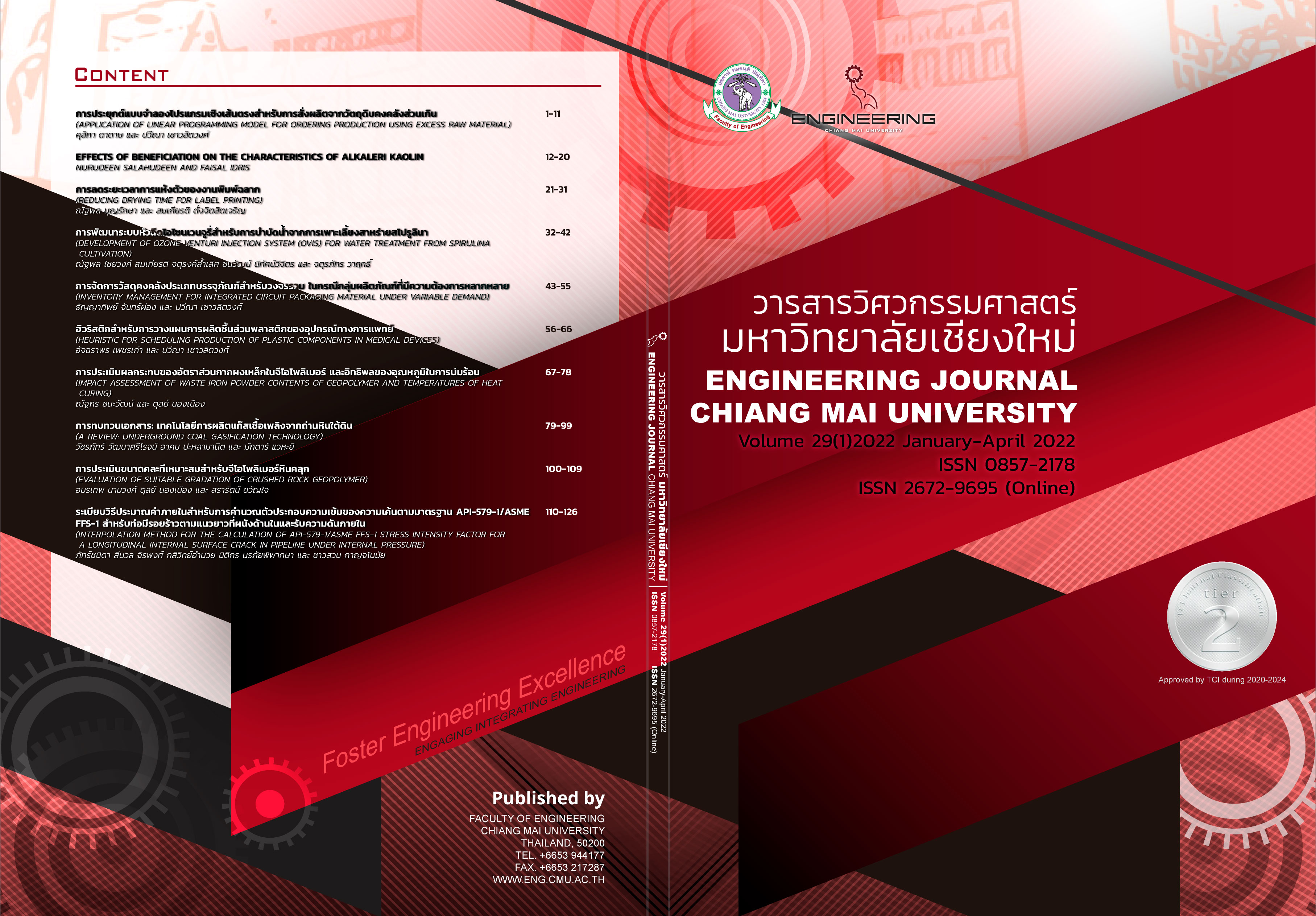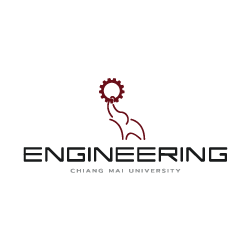Reducing Drying Time of Label Printing
Keywords:
factor, time reduction, Half-Factorial DesignAbstract
In the recession era, A case study of printing factory collects statistics from January 2020-March 2021 found that entrepreneurs lost the opportunity to receive 53.75 million pieces of label printing, representing a loss of profit in the amount of 2.15 million baht because of delay in the production department. Therefore, the factory needs to find a solution to reduce the production time of label printing. The objective is to reduce the drying time of label printing by collecting the time of work at every step and researcher found that the steps that take the longest time that is drying time which takes 72 hours out of a total 156 hours, or equal to 44%. The problem is found, a working group of 8 people is established to brainstorm and determine the factors which affect to the drying of label printing by using fish bone chart. The factors are divided into man, machine, method, material and environment. The team identified 15 factors that affect to the drying of label printing and scored cause & effect relationship (Cause & Effect Matrix) each a factor based on research and theories. Using the Pareto rule, the 80/20 rule can be ranked in order of 6 important factors: 1. The volume of pigment in the printing ink. 2. Coating volume 3. Ink volume 4. Room temperature 5. Drying additive in printing ink 6. Drying additive in coating vanish and then researcher choose a half-factorial experiment (Half-Factorial Design) and found that 1) Coating volume, 2) Drying additive in printing ink, and 3) Drying additive in coating vanish are significant to the drying time. Optimal factor levels are conducted for label drying as quickly as possible without any quality problems. The result is 22% of coating volume, 3.4% of drying additive in ink, and 3.2% of drying additive in coating vanish. All factor level is performed to confirm the results based on experimental factors, the average drying time of label printing is 30.6 hours from 72 hours. The drying time is reduced by 41.4 hours or 57% of the drying time. The result after process improvements is able to get more jobs from customer and increase profit, equal to 2.37 million baht per a year.
References
ปิติวัฒน์ อุดมลักษณ์, “การลดของเสียที่มีฝุ่นปนเปื้อนในกระบวนการผลิตกระจกวัตถุดิบในอุตสาหกรรมชิ้นส่วนอิเล็กทรอนิกส์,” วิทยานิพนธ์ วศ.ม., จุฬาลงกรณ์มหาวิทยาลัย, กรุงเทพมหานคร, 2554.
จุฑามาศ รัตนกุล, “การลดข้อบกพร่องของกระบวนการบรรจุกุ้งแปรรูปซิชิแช่แข็ง,” วิทยานิพนธ์ วศ.ม., จุฬาลงกรณ์มหาวิทยาลัย, กรุงเทพมหานคร, 2554.
ธีระพงษ์ สำราญ, “การลดของเสียของเหล็กหล่อเหนียวประเภทขนาดผิดรูปและทรายตกในโรงงานผลิตชิ้นส่วน
ยานยนต์,” วิทยานิพนธ์ วศ.ม., จุฬาลงกรณ์มหาวิทยาลัย, กรุงเทพมหานคร, 2558.
สรารัตน์ ชาลีกัน, “การปรับปรุงค่าความชื้นเชื้อเพลิงชีวมวลในกระบวนการอบแห้ง,” วิทยานิพนธ์ วศ.ม., จุฬาลงกรณ์มหาวิทยาลัย, กรุงเทพมหานคร, 2558.
วิทยา เจนจิวัฒนกุล, “การลดของเสียในกระบวนการพิมพ์พลาสติก,” วิทยานิพนธ์ วศ.ม., จุฬาลงกรณ์มหาวิทยาลัย, กรุงเทพมหานคร, 2554.
T. Hessing, “Cause & Effect Matrix,” [online]. Available: https://sixsigmastudyguide.com/cause-and-effect-matrix/[2020, [Accessed 2020, Aug 9].
ขวัญชัย ห้วยลึก, “การลดของเสียจากข้อบกพร่องประเภทการโก่งของแขนจับหัวอ่านเขียนของ ฮาร์ดดิสก์ไดร์ฟ,”วิทยานิพนธ์ วศ.ม., จุฬาลงกรณ์มหาวิทยาลัย, กรุงเทพมหานคร, 2557.
ยศวิน ศรีศักดิ์สรชาติ, “การลดของเสียประเภทจุดสีในกระบวนการผลิตเม็ดพลาสติก,” วิทยานิพนธ์ วศ.ม., จุฬาลงกรณ์มหาวิทยาลัย, กรุงเทพมหานคร, 2557.
จามร หรูจิตตวิวัฒน์, “การศึกษาผลกระทบของค่าพารามิเตอร์ในกระบวนการผลิตที่มีต่อต้นทุนรวมและคุณภาพของสบู่ก้อน,” วิทยานิพนธ์ วศ.ม., จุฬาลงกรณ์มหาวิทยาลัย, กรุงเทพมหานคร, 2554.
สลักจิตต์ พุทธจักร, “การลดรอบระยะเวลาในการผลิตของกระบวนการผลิตตลับลูกปืนเม็ดกลม,” วิทยานิพนธ์ วศ.ม., จุฬาลงกรณ์มหาวิทยาลัย, กรุงเทพมหานคร, 2556.
M. A. Khan, “Increasing the efficiency of antibody purification process by high throughput
Technology and intelligent design of experiment,” Ph.D thesis, University College London UK., 2018.
R. M. Tavares, “The use of numerical optimization techniques in computational Fire Engineering
Models: A study through Evacuation modelling Analyses,” Ph.D thesis, University of Greenwich. London UK., 2011.
Downloads
Published
Issue
Section
License
ลิขสิทธิ์ของบทความที่ตีพิมพ์ในวารสารฉบับนี้จะยังเป็นของผู้แต่งและยินยอมให้สิทธิ์เผยแพร่กับทางวารสาร
การเผยแพร่ในระบบวารสารแบบเปิดนี้ บทความจะสามารถนำไปใช้ได้ฟรีในการศึกษา และในทางที่ไม่เกี่ยวกับการค้า




